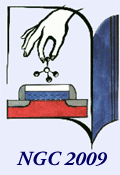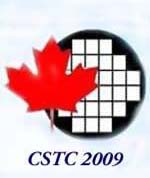|
Commentary
Integration of Photonic and Electronic Technologies - Impact on Information Technologies
|

|
As noted by 2007 Workshops on Photonic Integration sponsored by the National Science Foundation and the Defense Science Board-Advisory Group of Electron Devices, chipscale integration of photonic and electronic technologies could have a transformative impact on computing, telecommunication, transportation, medical, and defense/homeland security technologies.
The potential of chipscale photonic/electronic integration has also been noted recently in many scientific journals including in a featured issue of IEEE Spectrum.
Unlike the technology revolution derivative from CMOS electronics, photonic/electronic integration is unlikely to be monolithic involving a single material.
However, the recent advent of low optical loss silicon photonic circuitry has suggested the investment in CMOS foundries can be leveraged for photonic/electronic integration.
Moreover, recently considerable success has been achieved in integrating III-V semiconductor and organic nonlinear optical materials with silicon photonics.
Bandwidth and power records have been established integrating organic electro-optic (2nd order NLO) and all-optical (3rd order NLO) modulation and switching materials into nano-slot silicon photonic waveguides and microring resonators.
Millivolt electro-optic modulation and microwatt control power all-optical modulation to 10 THz has been demonstrated. These new devices address the power management issue of Moore's Law electronics and yield photonic devices and circuitry of dimensions compatible with electronic components.
Very likely the stage has been set for progressing far beyond the i-Phone in terms of personal telecommunications, information management, and entertainment as well as transforming the technology sectors mentioned above.
As with previous technology advances, the chipscale materials integration revolution is being fueled by Cyber-Discovery and nanotechnology advances in the design of materials and development of new materials processing technologies.
Thus the goal of chipscale integration has catalyzed a great deal of intellectual creativity.
Most recently the potential role of plasmonic and metamaterials is being actively pursued by a number of investigators and Federal funding agencies.
As with silicon photonics, the limitations and opportunities provided by these phenomena and materials are being addressed.
|



